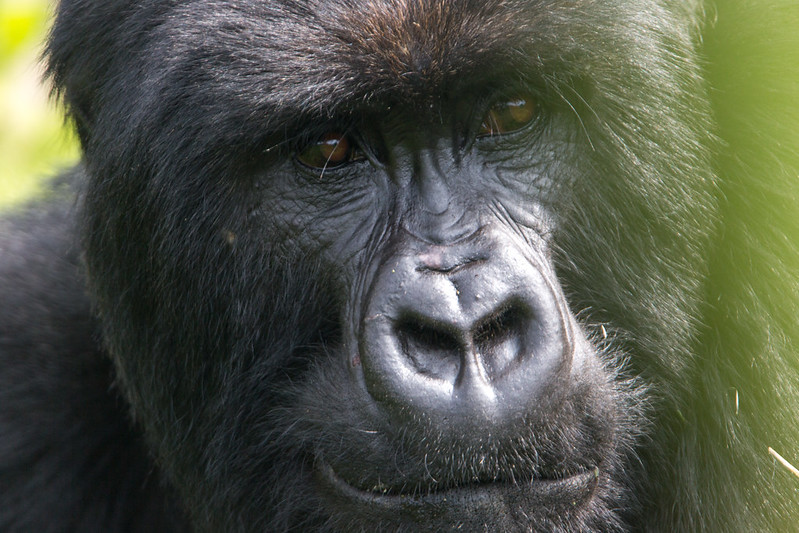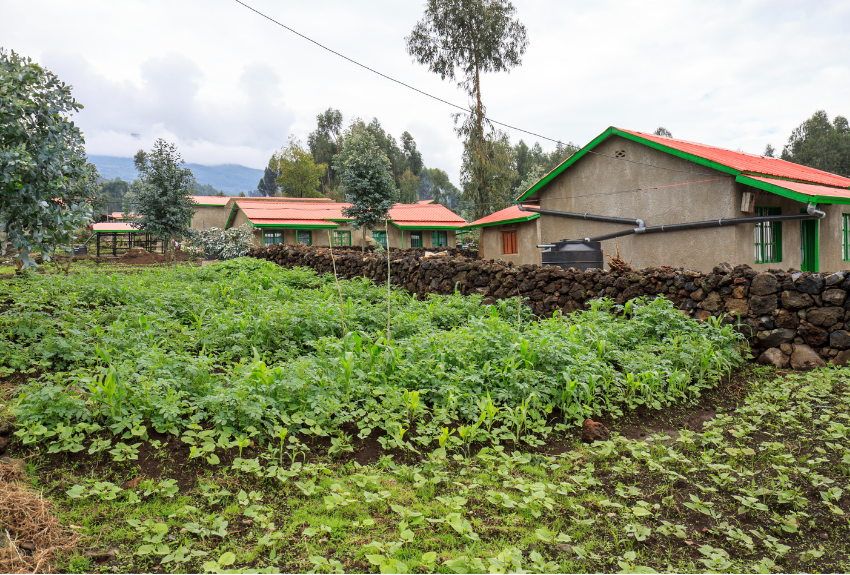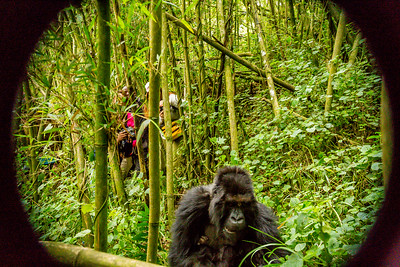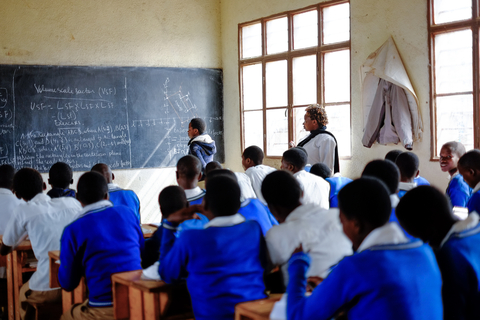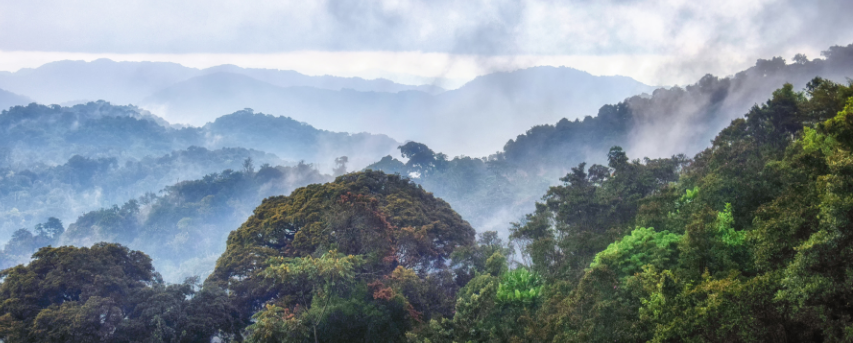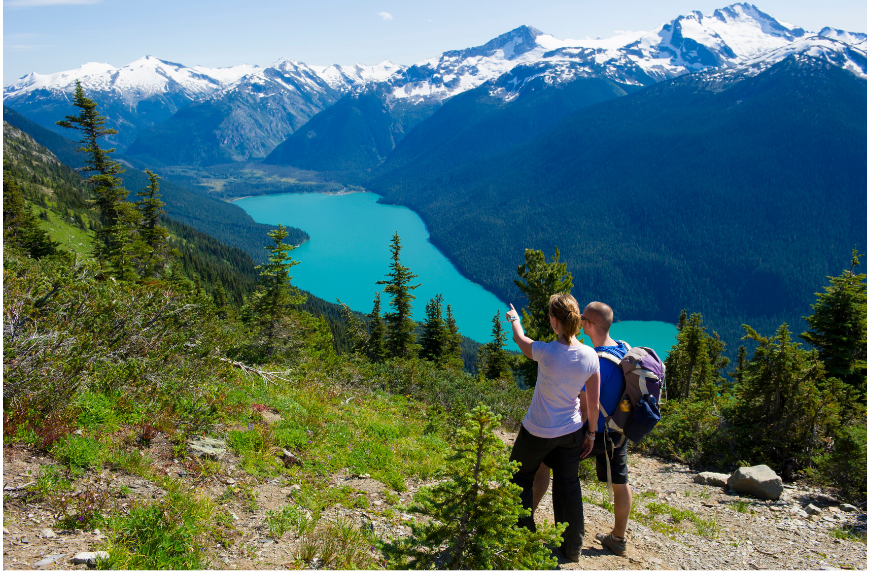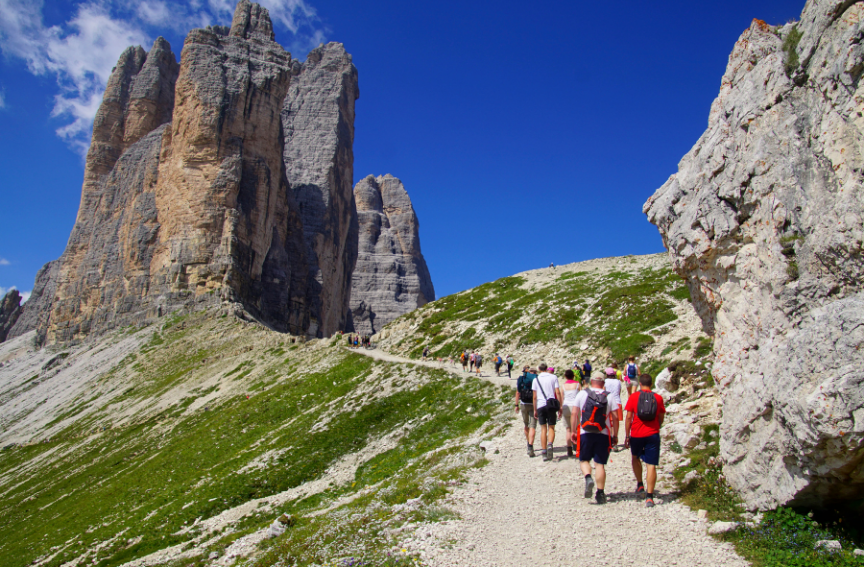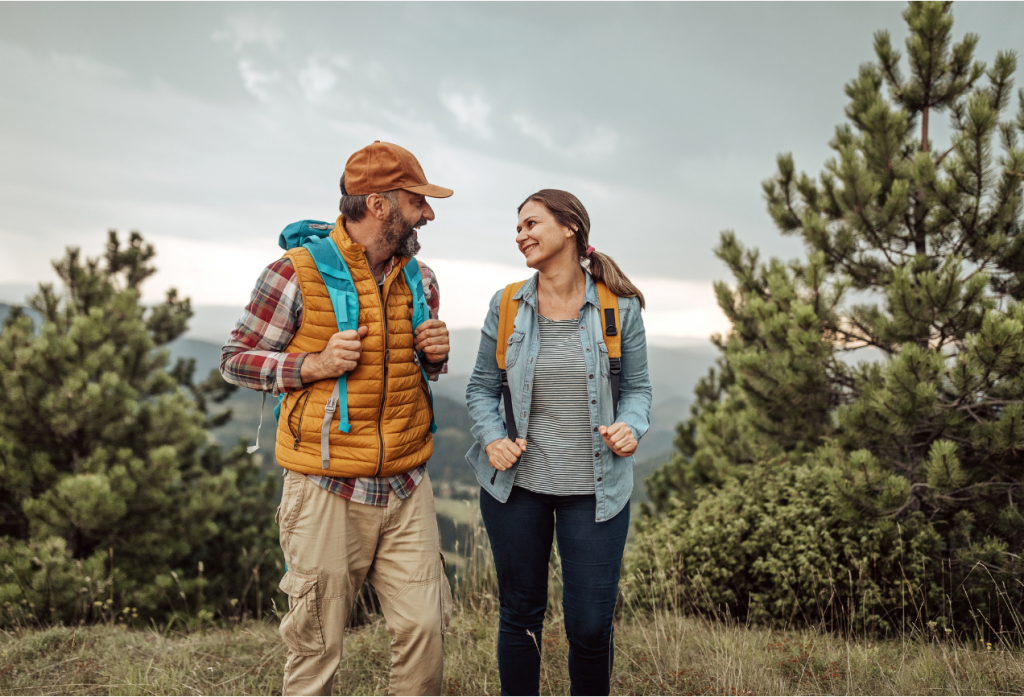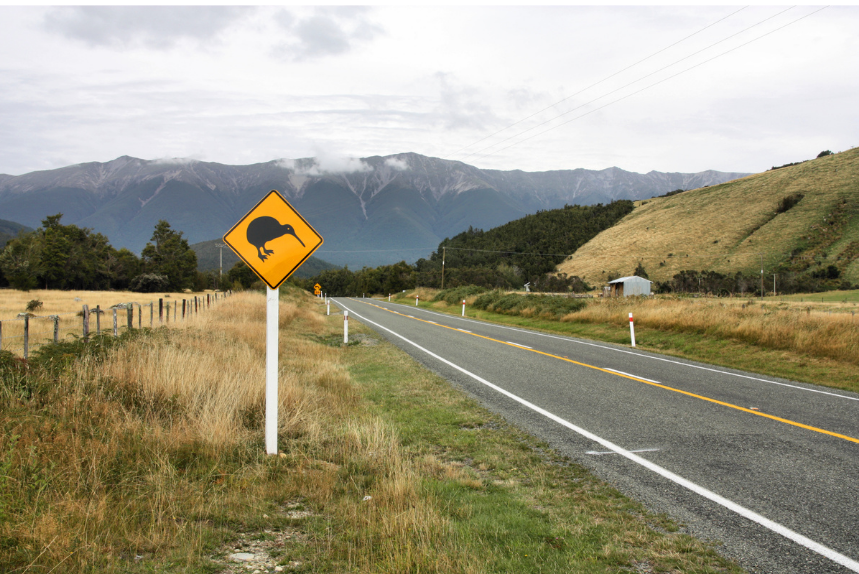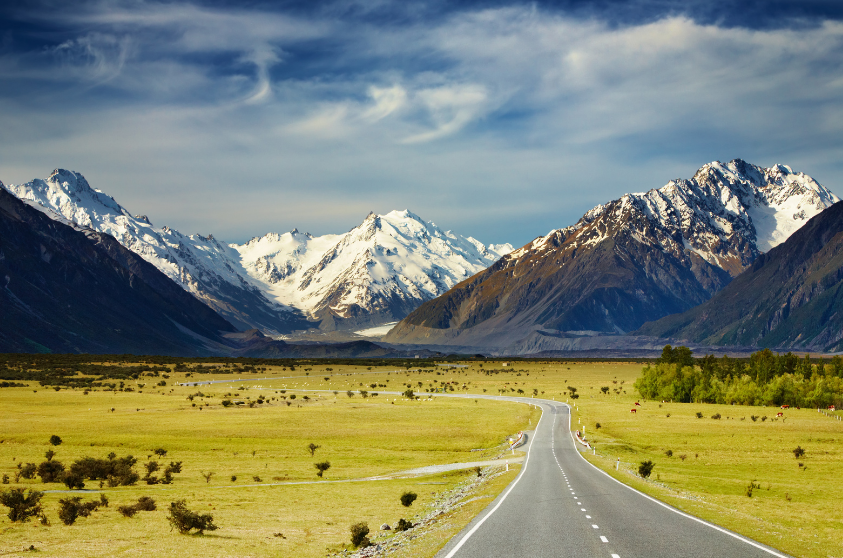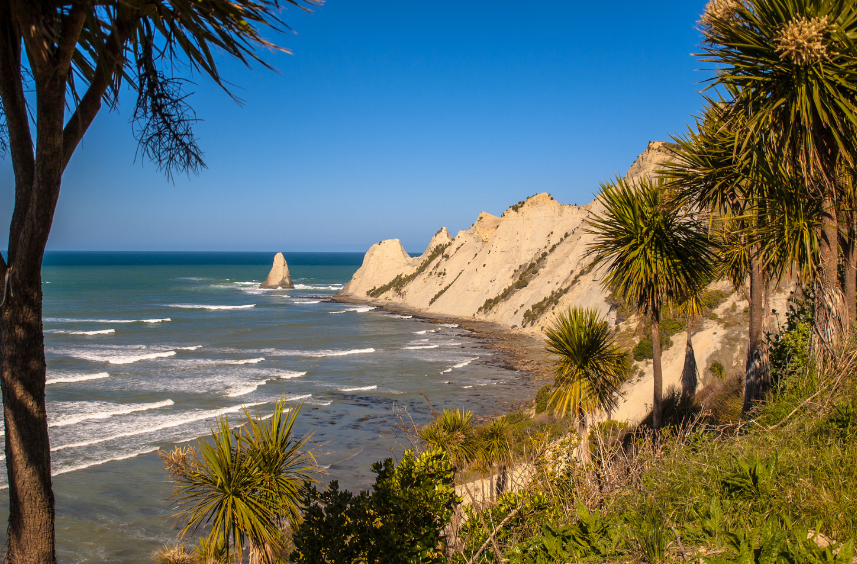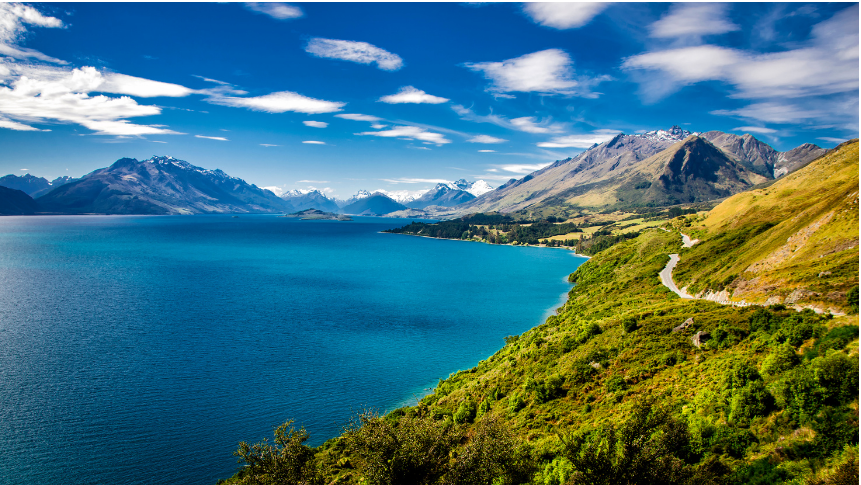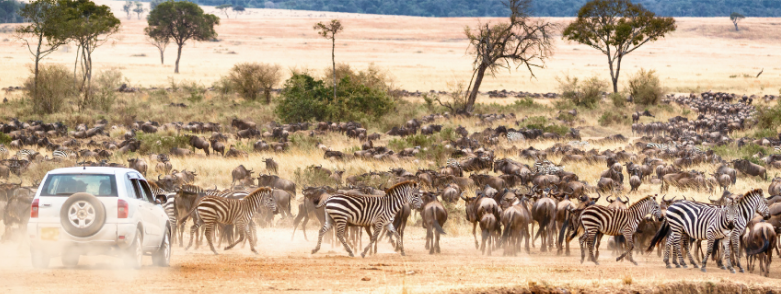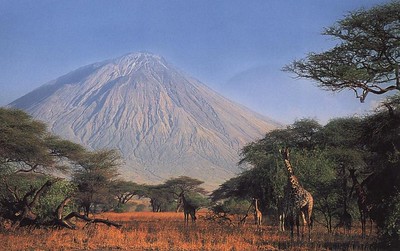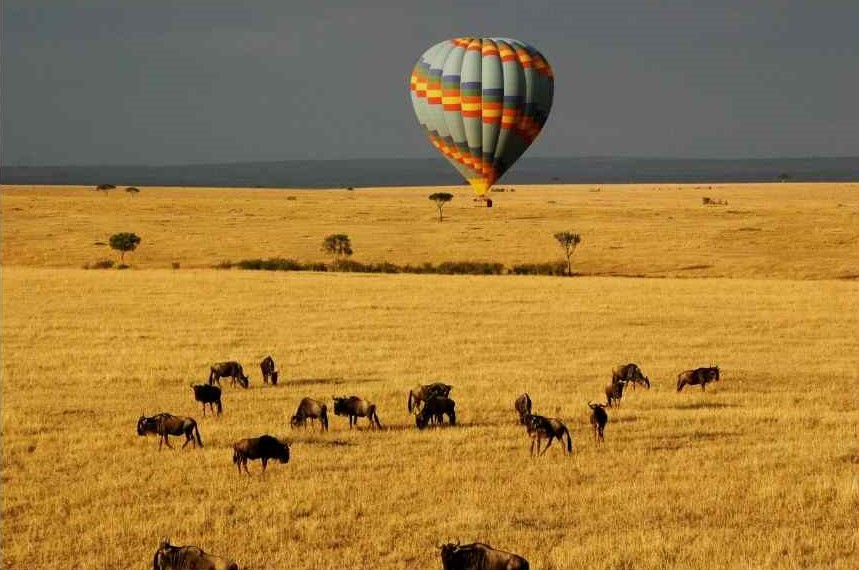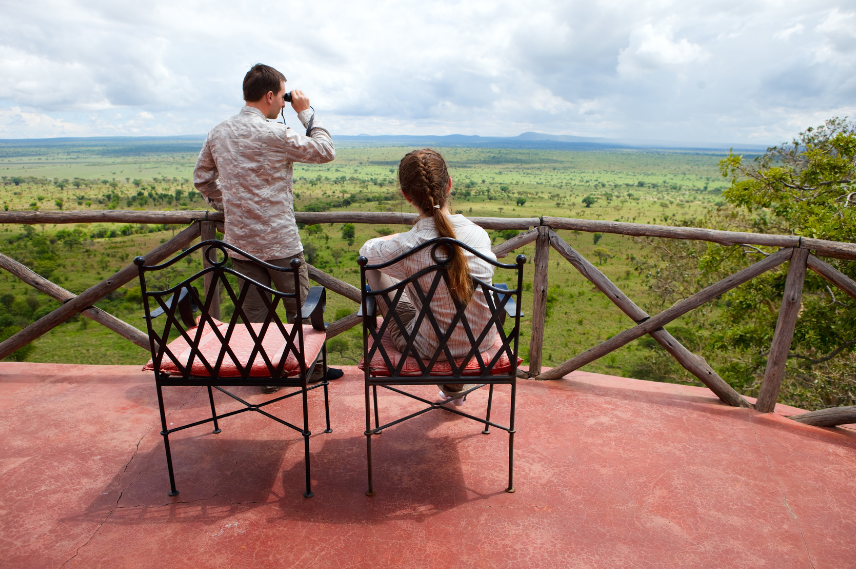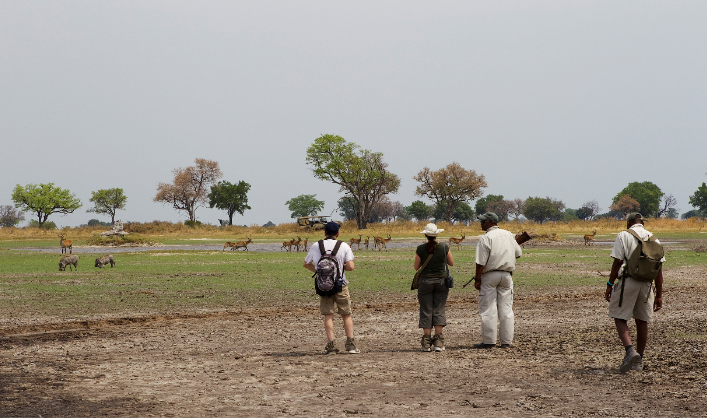No, you don’t really have to act like Tarzan, thumping your chest and swinging through trees to save the gorillas of Rwanda. You just need a sense of adventure, a respect for wildlife, some time (and money) to visit their home in Rwanda.
Volcano National Park ranks as a top destination for encounters with these creatures so closely related to humans. Seeing gorillas in the thick forest living together as families and caring for each other – this “family life” attracts tourists from all over the world.
Young gorillas playing together tumbling rollie-pollie down the mountain slopes; who isn’t fascinated by such antics?
Significant changes allowed their numbers to increase over the last several decades, but efforts can’t stop now. Steadfast, courageous, and loyal lovers of wildlife, like Tarzan, will continue to make a difference in their survival.
Trials of the gorilla population
Back in the 1980s, mountain gorilla populations stood at an all-time low of less than 300 and were classified as critically endangered. The relationship between humans and gorillas faced many ups and downs in the ensuing years with the gorillas losing ground, literally and figuratively.
Gorilla conservation efforts fuel tourism which in turn provide markets for the crops of Rwanda’s farmers.
Increasing human populations required more land to feed their families but this meant taking habitat from the gorillas and reducing their food supply. With the loss of habitat, encounters between humans and wildlife escalated. More and more gorillas died during these encounters and the stress and declining availability of food impacted their rate of reproduction.
Civil war and unrest also contributed to the loss of the apes as refugees fled to less populated areas, including national parks. To survive, these
victims of conflict scavenged firewood uncontrollably, further reducing gorilla habitat.
During periods of both conflict and peace, black markets for gorilla heads, hands, and feet encouraged poaching. Infants captured to be sold to zoos resulted in the loss of the young but also older apes as they fought to protect their young.
Hope Begins with the Gorilla Lady
With a loan to fund her trip, Dian Fossey traveled to Africa for the first time in 1963. During her travels, she met Louis Leakey, the famed anthropologist – a meeting that would change the course of her life.
Several years after returning home to the US, she met Leakey again, showing him articles she published after her trip. Impressed with her work, he offered her the opportunity to lead a long-term field study of gorillas. Dian had her chance to return to Africa – no second loan needed!
Over the years, while studying the apes, Dian started to spread awareness of the plight of these creatures. Her ability to relate to the gorillas and their acceptance of her helped her change attitudes of local governments that went on to establish departments charged with managing parks and protecting wildlife, including the gorillas. Fossey’s book and subsequent movie, Gorillas in the Mist, also brought much-needed international focus on Rwanda and its “star” attraction!
Educating the local community provides a start, but educated locals without money to sustain themselves only goes so far. Once one program cracks, others supporting programs generally fall.
Maligned Tourst Elsewhere, Tarzans in Rwanda
Lush scenery and wildlife draw tourists that can produce significant revenue for local communities. However, balancing tourism, gorilla conservation efforts, and the needs of the local people is tricky.
Examples exist all over the world where the negative impacts of tourism outweigh the benefits. Too much of a good thing poses a valid concern. Somehow, tourist revenue had to be shared with the local community to provide for their needs to prevent them from taking forest areas for crops.
Funds from gorilla permits return to the local communities in the form of schools, roads, health clinics and more.
Fossey and other scientists found with time gorillas could become comfortable in the presence of humans. If they could do so with scientists, why not tourists? Yet, exploitation of the gorillas remained a key concern.
How do you balance the number of tourists, support for the community, and protection of the gorilla population? Regulated tours that hike the mountains to observe the gorillas! Limiting the number of tourists protects the gorillas and also increases the value of the limited access, so the Rwandan
government established permits with a cost that would support the conservation efforts. The revenue funds conservation programs and infrastructure improvements that benefit gorillas, locals, and tourists.
Farmers can get their products to lodges and hotels to feed guests. Lodges hire community members to welcome and assist travelers. Guide, trackers, and porters aid tourists on their quest to see the gorillas. Gorillas are valued, loved, and protected then by everyone in the community.
Result – mountain gorilla numbers now exceed 1000! Tourist Tarzans helped save the gorillas that are now “endangered” from their “critically endangered” status before.
Don’t stop now!
Small changes can rock delicately balanced conservation programs. Strained by the devastating impact of the pandemic on tourism, lodges and parks laid off staff, farmers receive less income from lodges, and infrastructure projects have slowed.
A lack of tourists means a significant drop in revenue. Subsequently, the gorillas are at risk again What can you, the Tarzan, do?
Consider a gorilla trekking trip. Your permit directly benefits the gorillas and the local communities.
Visit other parts Rwanda and neighboring countries. Gorillas don’t know borders and the efforts of the neighboring countries of Uganda and the Democratic Republic of the Congo and other areas of Rwanda contribute to the survival of the species.
The landscape of Volcanos National Park helps explain the title of Dian Fossey’s book, “Gorillas in the Mist.”
Buy local handicrafts, enjoy local restaurants, tip porters, guides, and trackers. Locals feel the link between tourism and their quality of life directly.
Help control the spread of diseases particularly COVID-19 by getting vaccinated and supporting worldwide vaccination efforts. Gorillas share 98% of their DNA with humans, so the threat of the spread of disease between apes and humans is significant.
Spread the word of conservation and responsible tourism. We as humans share this planet with the wildlife. Survival of one is not possible without the survival of the other.
Tarzan didn’t save the day by himself. Tourists alone, won’t save the mountain gorillas either. Responsible tourism combined with the efforts of the Rwandan government and local communities together provide the keys to saving these gentle giants of the mountains of Eastern Africa!
Want to do your part? Call me to talk about a trip today!

